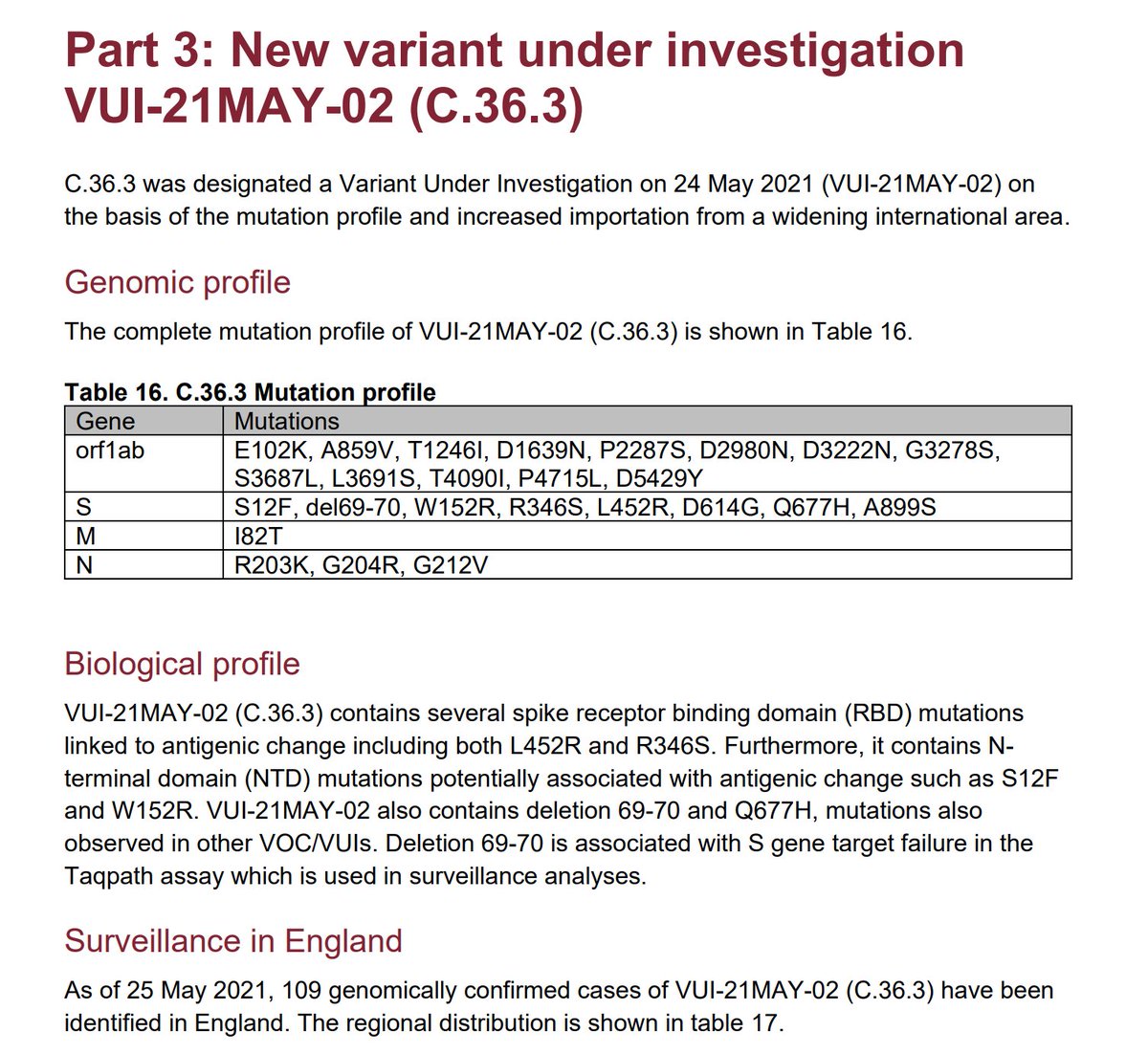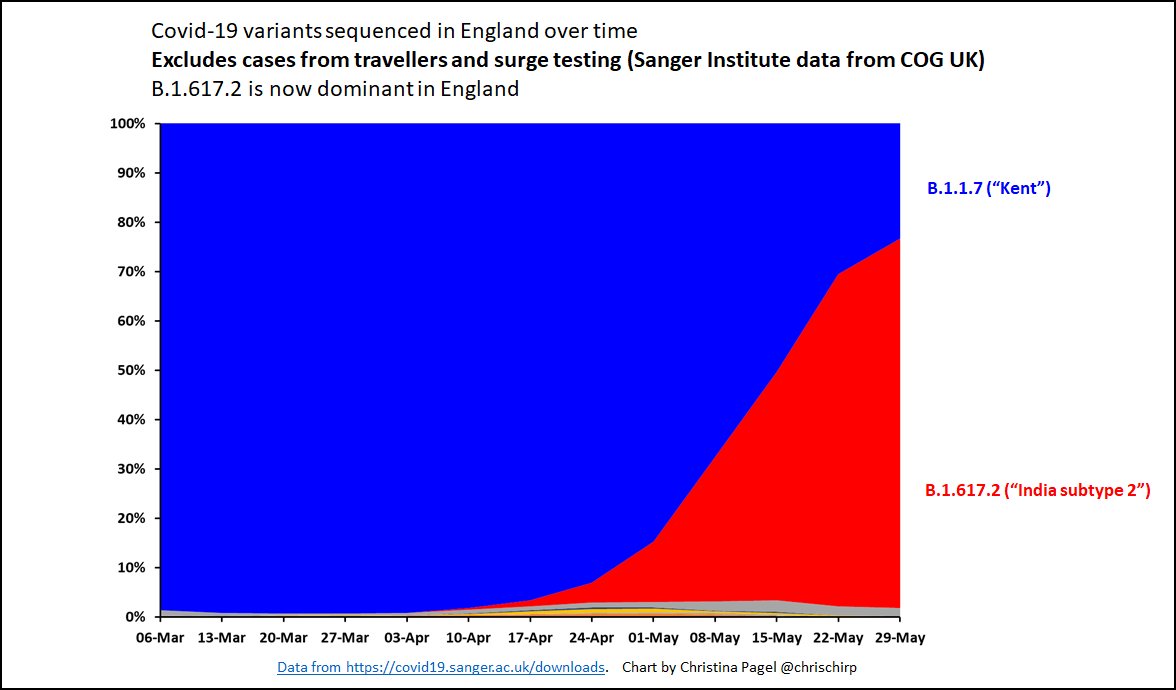
THREAD on variants & borders:
SAGE warned in Jan that a red list border policy "geographically targeted travel band" was unlikely to keep variants out.
This is because we don't know in advance where the *next* concerning variant is coming from.
assets.publishing.service.gov.uk/government/upl…
1/11
SAGE warned in Jan that a red list border policy "geographically targeted travel band" was unlikely to keep variants out.
This is because we don't know in advance where the *next* concerning variant is coming from.
assets.publishing.service.gov.uk/government/upl…
1/11

UK spent Jan & Feb making red list policy about variants discovered in Brazil & S Africa. But wasn't paying any attention to the situation, in say, S Asia.
SAGE also said that red list policy works best if implemented very quickly & if in countries with low UK traffic. 2/11
SAGE also said that red list policy works best if implemented very quickly & if in countries with low UK traffic. 2/11
India has strong travel links with the UK and started its awful surge in March. By 24th March, the Indian govt was warning about a new fast spreading variant.
UK waited until 23rd April before India was added to red list - and it did work to reduce travel. But too late. 3/11
UK waited until 23rd April before India was added to red list - and it did work to reduce travel. But too late. 3/11

By the time the red list went into effect, there were already over 600 sequenced cases in the UK and it had been doubling every week since arrival.
And B.1.617.2 is unlikely to be the last dominant variant in the UK. 4/11
And B.1.617.2 is unlikely to be the last dominant variant in the UK. 4/11
In last week's technical report update, PHE included a *new* variant under investigation: C.36.3.
It arrived via various countries, including Thailand and Egypt, none of them on the red list.
There are already 109 identified cases in UK.
assets.publishing.service.gov.uk/government/upl… 5/11
It arrived via various countries, including Thailand and Egypt, none of them on the red list.
There are already 109 identified cases in UK.
assets.publishing.service.gov.uk/government/upl… 5/11

This new variant C.63.3 has mutations common to various existing concerning variants - mostly associated with some vaccine escape. Little else is known about it. 6/11
Meanwhile, Vietnam just reported a new concerning variant which is a combination of both our current main variants: "Kent" & "India".
Vietnam isn't on the red list.
Of course - this particularly type of variant could arise independently here...
bbc.co.uk/news/world-asi… 7/11
Vietnam isn't on the red list.
Of course - this particularly type of variant could arise independently here...
bbc.co.uk/news/world-asi… 7/11
Vietnam warns that it seems to be spreading super easily and they suspect it's behind the current large surge in cases there.
Particularly sad in a country that has suppressed Covid so successfully for so long and where hardly anyone is vaccinated. 8/11
Particularly sad in a country that has suppressed Covid so successfully for so long and where hardly anyone is vaccinated. 8/11

The point of this is not to say we should be adding certain countries to the red list - it is to say that the red list concept is by its very nature inadequate to prevent the importation & spread of new variants.
@GabrielScally highlighted it here
theguardian.com/commentisfree/… 9/11
@GabrielScally highlighted it here
theguardian.com/commentisfree/… 9/11
We are still in the middle of our vaccination programme.
The new dominance of B.1.617.2 ("India") will already likely result in more cases, more hospitalisations and more deaths while we complete our programme. It risks delaying further opening. 10/11
The new dominance of B.1.617.2 ("India") will already likely result in more cases, more hospitalisations and more deaths while we complete our programme. It risks delaying further opening. 10/11
Leaving ourselves open to more variants this summer - both through our red list system and by supporting international travel for holidays - is just adding more and more risk.
We should wait to travel until a large majority of adults have protection from 2 doses. /END
We should wait to travel until a large majority of adults have protection from 2 doses. /END
• • •
Missing some Tweet in this thread? You can try to
force a refresh
















